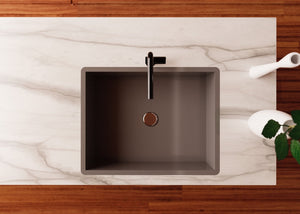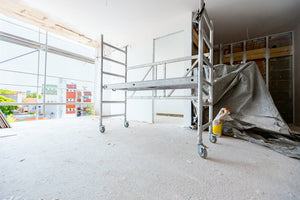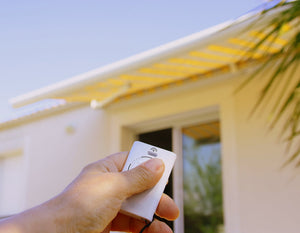How Much Do Folding Arm Awnings Cost in Australia?

When researching how much folding arm awnings cost in Australia, homeowners encounter a varied marketplace where prices range from affordable manual options to high-end motorised solutions. We recognise that choosing the right outdoor shade investment involves careful consideration of upfront costs versus long-term benefits.
Our experience in delivering practical home solutions across Australia enables us to guide customers through these choices confidently, helping them select awnings that align perfectly with their financial plans and outdoor living requirements.
How Much Do Folding Arm Awnings Typically Cost?

Folding arm awnings cost in Australia varies significantly based on size, features, and installation requirements. Manual systems typically start around $500 for smaller units and can reach $3,000 for larger, commercial-grade installations. Motorised versions begin at approximately $2,000 and extend to $8,000 or more for premium full-cassette systems with smart features.
The most popular sizes for residential use—ranging from 3m to 5m in width—generally fall within the $1,500 to $4,500 range for complete installations. At FactoryFast, our awning collection includes options across this spectrum, from manual retractable awnings to sophisticated motorised systems.
Size directly influences the final cost due to increased material requirements and structural complexity. A compact 3x2.5m unit requires less fabric, simpler mounting hardware, and shorter installation time compared to expansive 5.5x3m systems that demand reinforced frames and additional support arms.
Factors Influencing Folding Arm Awnings Cost
Size and Projection Requirements
The total width represents the primary cost driver, with each additional metre adding $300 to $800 to the base price. Projection depth—how far the folding arm awning extends from the wall—also affects pricing. Standard 2.5m projections suit most patios, while deeper 3m extensions require stronger springs and reinforced arms, adding $200 to $500.
Manual vs Motorised Operation
Manual awnings operate via hand crank systems, offering simplicity and reliability at lower price points. Motorisation adds $650 to $1,500 to the base cost but provides convenient push-button operation. Premium European motors can increase this figure to $2,000 due to advanced features like obstacle detection and smartphone integration.
Our motorised awning collection showcases various automation options, from basic remote control to smart home-compatible systems with wind sensors.
Fabric Quality and Durability
Fabric selection has a significant impact on both cost and longevity. Polyester blends represent the most economical option at $300 to $600 per unit, but typically last 5 to 7 years. Solution-dyed acrylic fabrics cost $600 to $1,200 more but maintain colour integrity and UV protection for 10 to 15 years.
Premium PVC-coated fabric options command the highest prices—$1,000 to $2,500—but offer complete waterproofing and enhanced durability in harsh Australian conditions.
Frame Construction and Protection
Basic aluminium frames provide adequate strength for most residential applications. Marine-grade aluminium costs 20% to 30% more but proves essential in coastal areas, where salt corrosion can halve the lifespan of standard frames.
Cassette awning systems protect internal mechanisms when retracted, thereby extending operational life by preventing damage from dust and moisture. Semi-cassette designs add $300 to $600, while full-cassette protection increases costs by $800 to $1,200.
Different Types of Awnings
Folding Arm Awnings
These retractable systems feature collapsible arms that extend and retract the fabric without the need for support posts. They offer maximum flexibility and are suitable for most residential applications.
Fixed Awnings
Permanent structures cost less initially—typically $200 to $500—but lack adjustability. They work well for consistently shaded areas but cannot adapt to changing weather conditions.
Drop-Arm Awnings
Vertical systems that extend downward from windows or balconies. Generally less expensive than folding arm systems, but limited in coverage area.
Manual vs Motorised Retractable Awnings

Manual systems excel in simplicity and cost-effectiveness. Hand crank operation requires minimal maintenance and eliminates electrical complications. They suit households that adjust awnings infrequently or prefer complete control over extension speed.
Motorised retractable awnings provide superior convenience, particularly for larger outdoor spaces where manual operation becomes physically demanding. Remote control operation enables quick response to changing weather, while programmable timers can automatically extend shade during peak sun hours.
Smart motorised systems integrate with home automation platforms, allowing voice control and automatic weather response. However, they require electrical work connections and periodic motor maintenance.
How Much Does It Cost to Motorise a Folding Arm Awning?
Retrofitting an existing manual awning with motorisation typically costs $800 to $2,000, depending on the motor quality and the complexity of the installation. Basic 240V motors start at around $650, while premium brushless DC systems with battery backup cost between $1,200 and $1,800.
Installation requires certified electrical work, adding $200 to $500 for power supply connections and safety compliance. Complex retrofits involving control integration or sensor additions can increase these figures by $300 to $800.
Budgeting Tips for Buyers
Consider Long-term Value
Higher initial investments in quality material and motorisation often prove economical over 10 to 15-year lifespans. Acrylic fabrics and marine-grade frames reduce the frequency of replacement, while motorised operation can decrease energy costs through optimised shade management.
Plan for Installation Costs
Professional installation adds $300 to $800 for standard single-storey applications. Multi-storey installations requiring scaffolding can increase this to $1,200 or more. DIY installation saves labour costs but requires technical skill and appropriate tools.
Factor in Ongoing Maintenance
Budget $100 to $200 annually for cleaning, lubrication, and minor adjustments. Motorised systems may require additional servicing every three to five years.
Advantages of Arm Awnings
Folding arm awnings deliver exceptional versatility compared to fixed shade solutions. Their retractable design preserves architectural aesthetics while providing on-demand protection from sun and light rain.
Energy efficiency represents a significant benefit, with properly positioned awnings reducing indoor cooling costs by 20% to 30%. This translates to an annual savings of $150 to $400 in most Australian climates.
The absence of support posts maximises usable floor space and eliminates obstacles for furniture arrangement. This proves particularly valuable on narrow balconies or compact patios.
Weather responsiveness enables protection during sudden storms while allowing full sun exposure on cooler days. Motorised versions with wind sensors automatically retract during high winds, preventing damage.
Is It Worth the Investment?
Quality folding arm awnings typically provide 10 to 15 years of reliable service when properly maintained. When factoring energy savings, furniture protection from UV fade, and enhanced outdoor living comfort, most installations achieve positive returns within 5 to 8 years.
Property value increases of 3% to 5% are common for homes with integrated shade systems, particularly in Australia's sun-intensive climate. This appreciation often exceeds the initial investment cost.
The health benefits of reliable shade access cannot be easily quantified, but they prove significant in preventing UV-related skin damage and heat-related discomfort.
If you're comparing options, check out our guide to the best retractable awnings in Australia and learn how much clearance is needed for a retractable awning to ensure proper installation.
FAQs
What are some affordable alternatives to an awning?
Shade sails offer similar coverage at lower costs—typically $200 to $800 installed—but lack the convenience of retractability. They require permanent anchor points and may not be suitable for all architectural styles.
Market umbrellas provide portable shade for $100 to $500 but offer a limited coverage area and require storage during strong winds. They work well for temporary or rental situations.
Pergolas with retractable canopies cost $1,500 to $4,000 but provide a permanent structural framework. They suit larger entertaining areas but require more extensive installation.
Why are awnings so expensive?
Quality awnings incorporate engineered components designed to withstand winds and extreme Australian weather conditions. Aluminium frames must resist corrosion, UV degradation, and wind loads of up to 40 km/h while maintaining smooth operation over thousands of cycles.
Fabric technology involves solution-dyeing processes, UV-resistant treatments, and waterproof coatings that maintain performance for decade-plus lifespans. These materials cost significantly more than basic textiles.
Professional installation requires structural assessment, precise mounting to prevent water penetration, and electrical integration for motorised systems. Certified tradespeople charge premium rates for this specialised work.
How many years do awnings last?
Well-maintained folding arm awnings typically provide 12 to 18 years of reliable service. Premium acrylic fabrics maintain their appearance and functionality for 10 to 15 years, while quality aluminium frames can last 20 years or more with proper care.
Coastal installations face more aggressive conditions due to salt corrosion, but they still achieve lifespans of 8 to 12 years with marine-grade materials and regular maintenance.
Motorised components generally require replacement or major servicing after 8 to 10 years, though premium European motors may extend this to 12 to 15 years.
What is the downside of awnings?
Initial cost represents the primary barrier, particularly for motorised systems with premium features. Budget-conscious homeowners may find the investment challenging despite long-term benefits.
Maintenance requirements include regular cleaning, lubrication, and occasional replacement of fabric or components. Neglect can lead to premature failure and costly repairs.
Wind limitations restrict use during storms or high-wind conditions. Automatic retraction systems help protect the awning but eliminate shade when it might be most needed.
Limited winter benefits are available in southern regions, where low-angle sun reduces shading effectiveness; however, retractability allows for full solar gain when desired.
Key Takeaways
Folding arm awning costs in Australia range from $500 for basic manual units to over $ 8,000 for premium motorised systems. Size, motorisation, fabric quality, and installation complexity represent the primary cost drivers.
Manual systems suit budget-conscious buyers and infrequent users, while motorised options provide superior convenience and energy-saving potential. Professional installation ensures optimal performance and warranty compliance, though capable DIY enthusiasts can save $300 to $800 on simpler installations.
Quality materials—particularly acrylic fabrics and marine-grade frames—justify higher initial costs through extended lifespans and reduced maintenance requirements. Most installations achieve positive returns through energy savings, increased property value, and enhanced outdoor living comfort within 5 to 8 years.
At FactoryFast, we offer comprehensive awning solutions from budget-friendly manual systems to sophisticated motorised awning installations. Our 5.0m x 3.0m retractable folding arm awning and compact DIY outdoor awning covers demonstrate our commitment to practical, value-driven shade solutions for Australian homes.
Citations:
[1] https://www.factoryfast.com.au/blogs/articles/how-much-does-a-retractable-awning-cost
[2] https://www.airtasker.com/au/costs/awning/awning-installation-cost/
[3] https://undercoverblinds.com.au/folding-arm-awnings-melbourne/
[4] https://www.indooroutdoor.com.au/should-i-invest-in-a-folding-arm-awning-exploring-the-benefits-for-homes-and-businesses/





